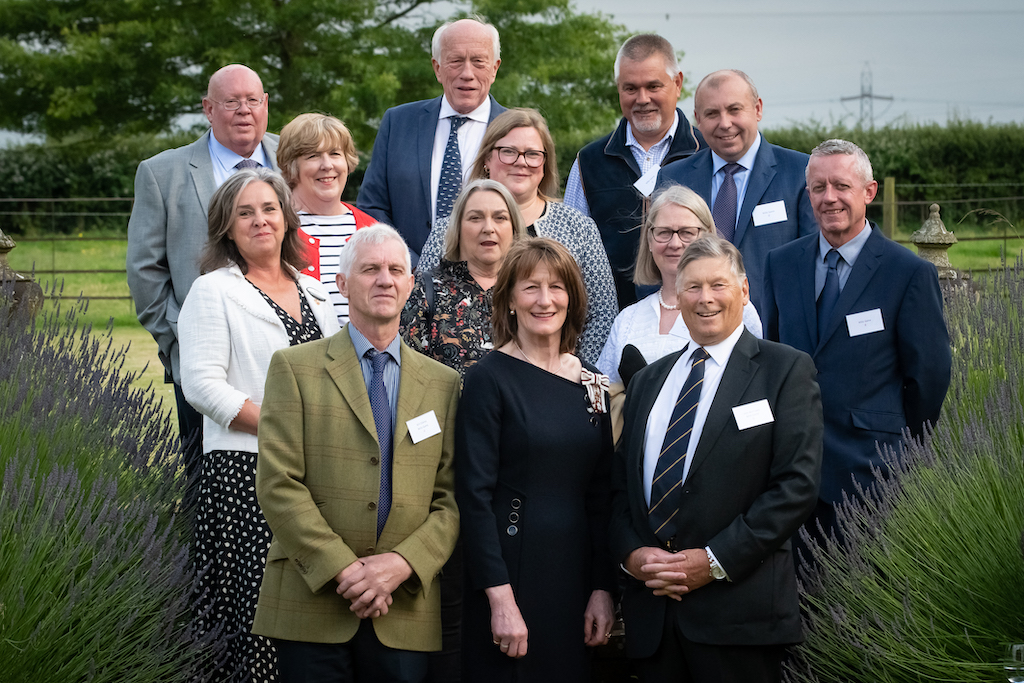Shropshire is a wonderfully varied county but to find true mountain scenery one has to head west, for Wales. Snowdonia is a vast landscape of towering peaks and sparkling lakes.
Many of the geographical features were created iduring the last Ice Age. Glaciers deposited large rocks called ‘Erratics’ and carved huge bowls called ‘Corries’. Knife-edge ridges such as Crib Goch on Mount Snowdon are the result of two Corries forming back to back. In a mountain environment like this, winter conditions normally arrive earlier and are
more severe than in the lowlands.
Today I am walking in the Carneddau range of mountains, some of the highest ground in Wales.
They are great hulking mounds perched in the western part of the National Park. The steep grassy ridges are shrouded in patchy cloud, reducing visibility. Over time rocks are smashed up by the constant freezing and thawing in the cold and wet conditions. This forms the loose piles of scree that characterise these lofty peaks.
Walking up amongst the rocks, the vegetation is mainly species-poor grassland characterised by grasses such as Sheep’s Fescue, Common Bent and Mat Grass. The bracken is withered and brown at this time of year. Rushes are growing in wetter areas but not many vascular plants thrive on the rocky acidic soil. Through the cloud it is possible to make out the outline of a pony grazing on the mountain side. This is one of the wild ponies that have made these mountains their home. The breed dates back to 500 BC and the animals have never been domesticated, making them the only truly wild ponies in Britain.
The low cloud forms water droplets on the mountain rocks. This seems a harsh place for any vegetation to grow. However, if one looks closely, the surface of the rock is home to some amazing organisms. Lichens are an example of a symbiotic relationship between an alga and a fungus. Because of their biology, lichens grow in some of the most inhospitable places on the planet. The fungus grows around the alga to protect it and stop it getting washed away by heavy rains. Meanwhile the alga can photosynthesise so produce nutrients from sunlight. This means that the lichens do not necessarily have to grow on an
organic substrate.
I can see some grey-blue stalks with red tips at the end. They are growing from the rock and look almost alien. This is one of the Cladonia species. A very different looking lichen is the Map Lichen. This is a pale yellow-green colour and grows flat on the rock surface, bordered by a black line. It has been used to date glacial deposits on the basis that the bigger the lichen, the older the rock.
For many years, hard-working hands have utilised the rocks from these mountains to build dry stone walls. They criss-cross the fields and run up and over high mountain passes. Hedges do not grow well in the harsh climate so dry stone walls are utilised as stock-proof barriers. They are more than just a wall. They are a legacy to the hard-working men and women who forge a way of life in this forbidding landscape.
Studies have been completed to look at the wildlife benefits of dry stone walls. Linear habitats such as walls are very important for sheltering small mammals as they move around the countryside. They can link areas of suitable habitat. The style of constructing dry stone walls also means that there are plenty of nooks and crannies. These are perfect for hibernating animals from toads and slow worms, to hedgehogs and bats.
The lack of trees in upland areas also means that dry stone walls provide cover for nesting birds, such as Wheatear. Birds of prey utilise the walls as perching points and plucking posts. The walls also provide sheltered conditions for wildflowers such as Foxgloves to germinate.
As I walk down the final ridge of the day, I drop below the cloud level and a wonderful view opens up towards Devil’s Kitchen, Tryfan and the Glyders. These are names that stir the souls of rock climbers and hill walkers. This landscape will never be tamed. Humans will always be mere visitors. Long may Snowdonia remain the realm of the raven…rocky, windswept, beautiful.
Do one thing for wildlife this month:
December can be a cold and dark month with limited opportunities for plant spotting around the countryside. Lichens bring year-round colour so why not take the opportunity to learn more about this fascinating group? An exciting project is currently underway through the Natural History Museum. It is called OPAL (Open Air Laboratory) and encourages members of the public to take part in wildlife recording. One of the surveys uses lichens to monitor air quality. For more details, please see: www.opalexplorenature.org/TakePartAirSurvey
Merry Christmas to all readers and here’s to a 2012 full of wonderful wildlife encounters!





